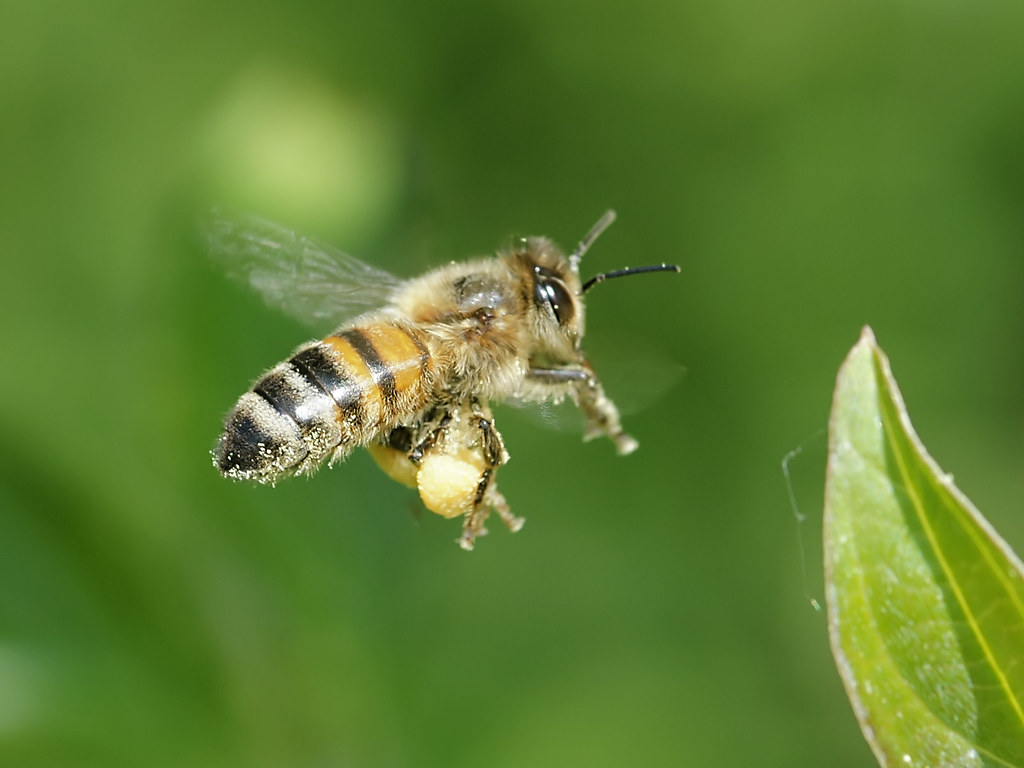The complex world of honey bees is worth diving deeper into the colony to learn about their society. The Western honey bee, Apis mellifera, is the most well-known representative of the honey bee family. This medium-sized bee is responsible for a sizeable percentage of crop pollination around the globe. They also produce wax, honey, and many other products that we value. Though they are familiar to most, there is still much we can learn about them.

For example, did you know most honey bees in a colony are female? Or that there are different castes within a honey bee colony? As members of the order Hymenoptera, honey bees exhibit a phenomenon called haplodiploidy. In short, this means that the female (a queen bee in this case) can choose the sex of her offspring. Larvae that develop from fertilized eggs are female, and those that develop from unfertilized eggs are male. Haplodiploidy plays a big role in the development of honey bee castes and overall genetic relatedness between colony members.
The Queen
The queen bee is the most important bee in the entire colony. She is solely responsible to produce new bees and many regulatory pheromones that govern the colony. Queen bees can lay upwards of 2,000 eggs a day when resources are plentiful. The queen’s enlarged and extended abdomen helps a beekeeper identify her. The colony knows within hours that they have lost their queen. Worker bees become stressed, disorganized, and ultimately fail unless a new queen is acquired. Fortunately, healthy queens can live for 3-5 years.
The Worker Girls 
Diving deeper, the overwhelming majority of bees in the colony are workers. Worker bees are the definition of “girl power” as they are all female. This caste of bees tends to larvae, builds comb, clean the nest, defend the colony from attackers, and process nectar and pollen into food. Workers are not just taskmasters, but they also keep tabs on the queen. If the queen is injured, diseased, or otherwise incapable of doing her job, she is promptly replaced. In fact, some would argue that workers are the true “rulers” of the colony. Worker bee lives are busy and rough, as such most will perish within 28 days of being born.
The Drone Boys
The only male bees in the colony, people sometimes label drones as being useless, lazy loafers. In truth, they contribute very little to the overall colony. They do not gather pollen or nectar, they don’t clean cells, and they eat lots of honey. With that said, drones are vitally important for honey bee reproduction. Drones are responsible for providing a portion of the genetic material necessary for new honey bee queens to lay fertilized eggs. Interestingly, drone honey bees have no father, but they do have a grandfather. Once a drone mates successfully, he will die. Drones who do not mate successfully are removed from the colony at the end of the season.
Hungry for More!
Here is the first part of our honey bee series. Honey Bee Orders
Mack Lessig composed this article. He is our Community Gardens Program Coordinator for Manatee County, Agriculture and Extension Services Division in partnership with the University of Florida/IFAS and Manatee County Government. 941-722-4524 or MLessig@ufl.edu
If you want to keep honey bees in your backyard or commercially, reach out to Lisa Hickey, Interim Extension Director and Sustainable Food Systems Extension Agent. I address honey bee questions during swarm season or otherwise. Lisa.Hickey@ufl.edu Same office number.
Resources
Social Organization of Honey Bees
 0
0

